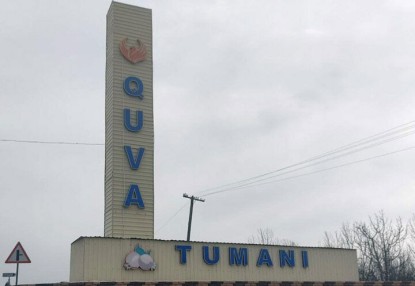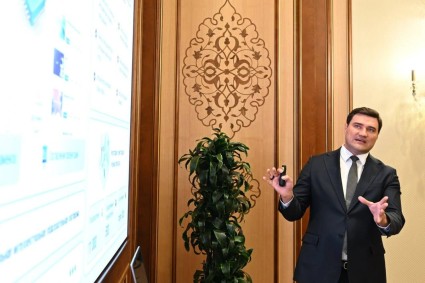The Center for Economic Research and Reforms (CERR) analyzed the potential impact of the adding Uzbekistan to YouTube’s monetization program on the Uzbek economy and identified key obstacles to the launch of this service.
Economic gains of YouTube monetization
YouTube monetization is available in 108 countries. In Central Asia, it is only available in Kazakhstan. In Russia (due to sanctions) and China, the service has been disabled.
According to the UN estimates, the cultural and creative industries account for 3.1% of global GDP and 6.2% of employment worldwide. In Uzbekistan, about 9,600 companies with 84 thousand employees work in this sector. By 2030, the share of the creative industries in GDP is expected to reach 5%.
As of January 2025, there are 33.9 million mobile users and 32.7 million Internet users in the country. The average mobile Internet speed is 37.82 Mbps, fixed — 79.06 Mbps.
The number of Instagram users in Uzbekistan stands at 11.7 million, TikTok — 2.6 million, Facebook — 2.3 million, X (former Twitter) — 250 thousand. Web traffic is distributed as follows: 66% — Instagram, 13% — Pinterest, 8% — Facebook, 6.3% — YouTube.
The number of active YouTube users in Uzbekistan is 13 million people per month, in Telegram — 20 million, in Meta (Instagram and Facebook) — 10 million.
The volume of the advertising market in Uzbekistan in 2024 is estimated at 2.1 trillion soums, of which:
- 29% — digital advertising;
- 20% — outdoor advertising;
- 51% — TV advertising.
The inclusion of monetization in Uzbekistan will not only open access to advertising on YouTube for local companies, but will also allow bloggers to earn income, according to the CERR.
According to estimates, the launch of monetization can boost Uzbekistan's GDP by 0.05-0.1%. In Kazakhstan, this figure is 0.1% of GDP.
There are more than 26 thousand active video bloggers in Uzbekistan:
Of these, 1,000 bloggers are large (over 100 thousand subscribers);
- 5,000 are medium (10-100 thousand);
- 20 thousand are small (1-10 thousand).
With a CPM (cost per 1,000) of $0.8-1.4 and an annual number of views of 36 billion, the total income can be $28.8-50.4 million. In the US, CPM is $5-15, in Kazakhstan - $0.8-2.
Obstacles to launching monetization
Storage of personal data. According to the Uzbek Personal Data Law, the data of Uzbek citizens must be stored on servers within the country.
Although similar requirements are in force in many countries, in world practice special agreements are often concluded with large international IT companies and concessions are allowed.
Thus, despite strict requirements for storing personal data in Russia and Kazakhstan, it was possible to reach compromises with companies such as Google and Meta, without the mandatory placement of servers in these countries, but with the signing of agreements on the protection of personal data.
In the European Union, data can be transferred outside the country, provided that it is stored in conditions comparable in terms of security to European ones. In India, mandatory data storage only applies to financial information.
To develop local infrastructure and ease server requirements, it is necessary to expand cooperation with global cloud platforms (AWS, Google Cloud, Microsoft Azure), as has been done in Kazakhstan.
YouTube servers operate in accordance with international Tier III standards.
In Uzbekistan, the first such cloud infrastructure according to the Tier III standard was built by Uztelecom in 2021.
Building a Tier III data center costs an average of $7-10 million per million megawatt. YouTube's average storage capacity is 5-20 million MW.
Today, Google has 33 data centers located in the United States (18), Uruguay, Chile, Ireland, the Netherlands (3), Denmark, Finland, Germany, Belgium, Norway, the United Kingdom, Taiwan, Singapore, and Japan.
Copyright protection. Shortcomings in the legislative and practical protection of copyright may negatively affect the development of the YouTube content creation market. Key issues in this area include:
- Distribution of pirated content. Some small TV channels and bloggers upload foreign films, music, and sports broadcasts to YouTube without permission;
- The inability of authors to protect their works from illegal copying and re-uploading by other channels leads to a decrease in motivation;
- Weak development of the official licensing market: there are no local official distributors for music, films and TV series on YouTube.
Lack of transparent data on the advertising market. Due to the lack of regularly updated open data and statistics on the advertising market, Uzbekistan is often not represented in international reviews, which makes it difficult for companies like YouTube to make decisions.
It is recommended to implement a digital monitoring system, update legislation, strengthen public control and publish statistics on the advertising market in the public domain.
Uzbek language and speech recognition algorithms. YouTube's speech recognition algorithms, including obscene language, are based on artificial intelligence and machine learning. However, due to the presence of many dialects and subdialects in the Uzbek language, it is difficult for the system to accurately recognize Uzbek speech, which causes difficulties in its modernization and automatic content moderation.
In order for YouTube's speech recognition algorithms to correctly perceive the language, large volumes of audio data are needed. Therefore, to improve the quality of automatic subtitles and transcription in the Uzbek language, it is necessary to:
- collect and openly publish audio data in the Uzbek language;
- launch cooperation with Google and YouTube;
- develop scientific research in the field of artificial intelligence and natural language processing technologies;
- create pronunciation standards and lexical norms for the Uzbek language and its dialects by state linguists;
- provide grants and subsidies to bloggers, podcasters and content creators to increase the volume of high-quality content in the Uzbek language;
- train specialists.
Problems with international payment systems. At the moment, despite the presence of international payment systems in Uzbekistan, such as Visa, Mastercard and UnionPay, the most common platforms for earning income from YouTube - PayPal, Stripe and others - do not officially work in the country.
PayPal is only available for spending, but not for receiving funds. Bank transfers are possible, but limited due to high conversion and fees.
In 2024, Minister of Digital Technologies Sherzod Shermatov underscored that Uzbek YouTube content creators could earn more if they created videos in popular languages, such as English.
Answering journalists' questions about when the restriction on YouTube monetization would be lifted in Uzbekistan, the minister underscored:
"My advice is to work more for foreign audiences on YouTube. Because the monetization of English-language content is very high. For example, in Margilan, I met one of our Inha University graduates. He reviews 3D printers on his YouTube channel. Go to his channel - his reels have gained 30 million views. Because the English-language audience is huge. Thanks to this, he earns an average of $5,000 per month. Compare: how much can you earn on content in the Uzbek language, and how much - in English? Therefore, you need to make the most of the existing monetization mechanism," he said.
As for monetization, Shermatov said that it depend s on the plans and steps of the company itself.
Last year, it was reported that the restriction on YouTube monetization could be lifted in Uzbekistan in the near future, and that a corresponding appeal was sent to the platform's management.














